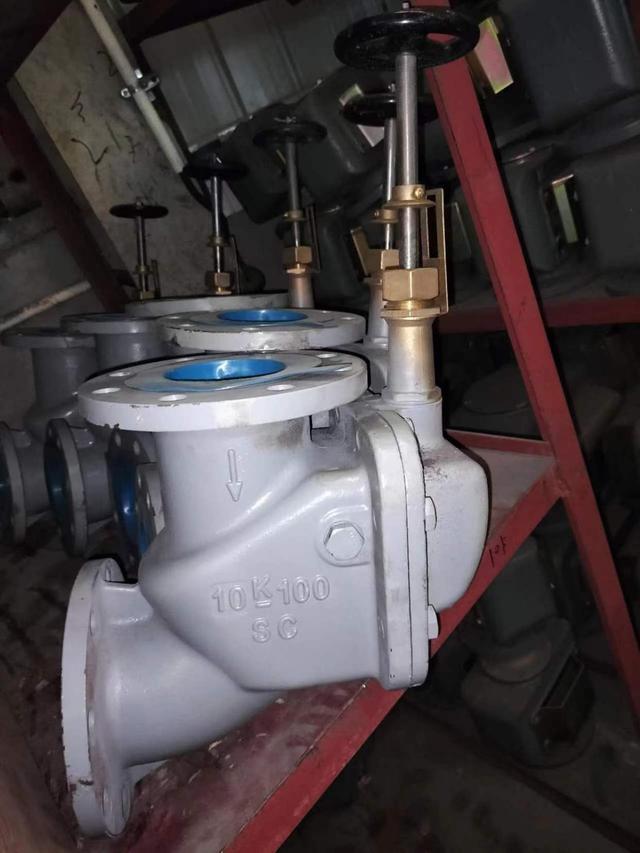|
Marine Valves: Critical Components in Modern Ship SystemsMarine valves are indispensable mechanical devices in maritime engineering, designed to regulate the flow, pressure, and direction of fluids (such as seawater, fuel, steam, or hydraulic oil) within a ship’s piping systems. These valves ensure the safe, efficient, and reliable operation of vessels by managing critical processes in propulsion, ballast, fire protection, refrigeration, and auxiliary systems. Their robustness is essential to withstand harsh marine environments, including corrosion from saltwater, mechanical stress, and extreme weather conditions. Key Types of Marine Valves Marine valves are categorized based on their function, design, and application. Common types include: Gate Valves Used for on/off control in pipelines, gate valves allow full flow when open and minimal resistance. They are widely used in fuel oil lines and ballast tanks. Globe Valves Ideal for throttling and precise flow regulation, globe valves handle high-pressure differentials in systems like steam circuits and engine cooling. Ball Valves Known for their quarter-turn operation, ball valves provide quick shut-off and are resistant to leakage. They are commonly deployed in fuel systems and seawater intake lines. Check Valves Prevent backflow in pipelines, ensuring unidirectional fluid movement. Critical in pump discharge lines and fire-fighting systems to avoid reverse flow. Butterfly Valves Compact and lightweight, butterfly valves are used in large-diameter pipelines for applications such as air conditioning and ballast water management. Safety and Relief Valves Protect systems from overpressure by releasing excess fluid. Essential in boiler systems and hydraulic circuits. Stop Valves Isolate sections of a system for maintenance, often in steam and compressed air lines. Specialized Valves Seacock Valves: Control seawater intake and discharge (e.g., through hulls). Deck Drain Valves: Manage deck drainage to prevent water accumulation. Refrigeration Valves: Include thermal expansion valves, pressure regulators, and solenoid valves in cold storage systems. Cargo Oil Valves: Regulate the flow of crude oil in tankers, often with double-check mechanisms for safety. Materials and Design Considerations Marine valves are engineered to endure corrosive and demanding conditions. Common materials include:
Stainless Steel (e.g., 316L): Resists seawater corrosion and high temperatures. Bronze and Brass: Suitable for low-pressure seawater systems. Ductile Iron/Nodular Cast Iron: Cost-effective for non-critical applications. Duplex Stainless Steel: Combines strength and corrosion resistance for harsh environments. Nickel Alloys: Used in high-salinity or chemically aggressive conditions. Design features such as anti-vortex inlets, erosion-resistant coatings, and leak-proof seals enhance durability. For example, seacock valves are often coated with epoxy or silicone to prevent biofouling and corrosion. Applications in Marine Systems Propulsion Systems Valves regulate fuel oil, lubricants, and cooling water to engines and turbines. Ballast Water Management Ballast valves control water intake and discharge to maintain stability, often incorporating filtration systems to prevent invasive species. Fire Protection Fire valves, including deluge and hydrant systems, ensure rapid water supply during emergencies. Refrigeration and Cold Storage Valves like thermal expansion valves and pressure regulators manage refrigerant flow in cargo holds and cold rooms. Hydraulic and Pneumatic Systems Valves direct hydraulic fluid or compressed air for steering, deck machinery, and cargo handling. High-Pressure Systems Safety valves in boilers, cargo tanks, and high-pressure pipelines prevent catastrophic failures due to overpressure. Smart Valves: The Future of Marine Valve Technology Modern marine systems increasingly integrate smart valves, which combine traditional functionality with advanced sensing, control, and communication capabilities. Key features include: 1. Sensor Integration Multi-parameter sensors: Monitor pressure (±0.1%FS accuracy), temperature (-40°C to 300°C), and flow rate (±2% error) in real time. Wireless networks: Use ZigBee or LoRa for low-power, long-range data transmission in distributed systems. 2. Advanced Control Algorithms PID and fuzzy logic control: Optimize valve positioning for non-linear systems (e.g., steam pipelines). Edge computing: Onboard processing reduces latency (<50ms) for critical decisions. 3. Actuation and Communication Electric actuators: Brushless DC motors with ±0.5% precision in torque and position. Communication protocols: Support Modbus, HART, and IoT platforms for remote monitoring. 4. Predictive Maintenance Vibration analysis and health indices predict wear, reducing unplanned downtime by up to 30%. 5. Energy Efficiency Flow shaping algorithms optimize valve openings to save energy (up to 20–30%). Solar-powered designs for remote or off-grid applications. Example Application: Smart ball valves in LNG carriers use AI-driven adaptive control to adjust for extreme temperatures (-162°C) and dynamic load conditions. Future Trends Digital Twins: Virtual valve models simulate performance under various conditions. AI-Driven Optimization: Machine learning predicts demand and adjusts control strategies. Blockchain for Maintenance: Secure, tamper-proof logs of valve operations and repairs. Green Energy Integration: Hybrid solar-wind power systems for autonomous valve operations. Conclusion Marine valves are the backbone of maritime engineering, ensuring the safety, efficiency, and compliance of vessels in diverse environments. From traditional globe valves to cutting-edge smart valves, their evolution reflects advancements in materials, automation, and sustainability. As the shipping industry embraces digitalization and environmental regulations, marine valves will continue to play a pivotal role in shaping the future of global trade and offshore operations. |

